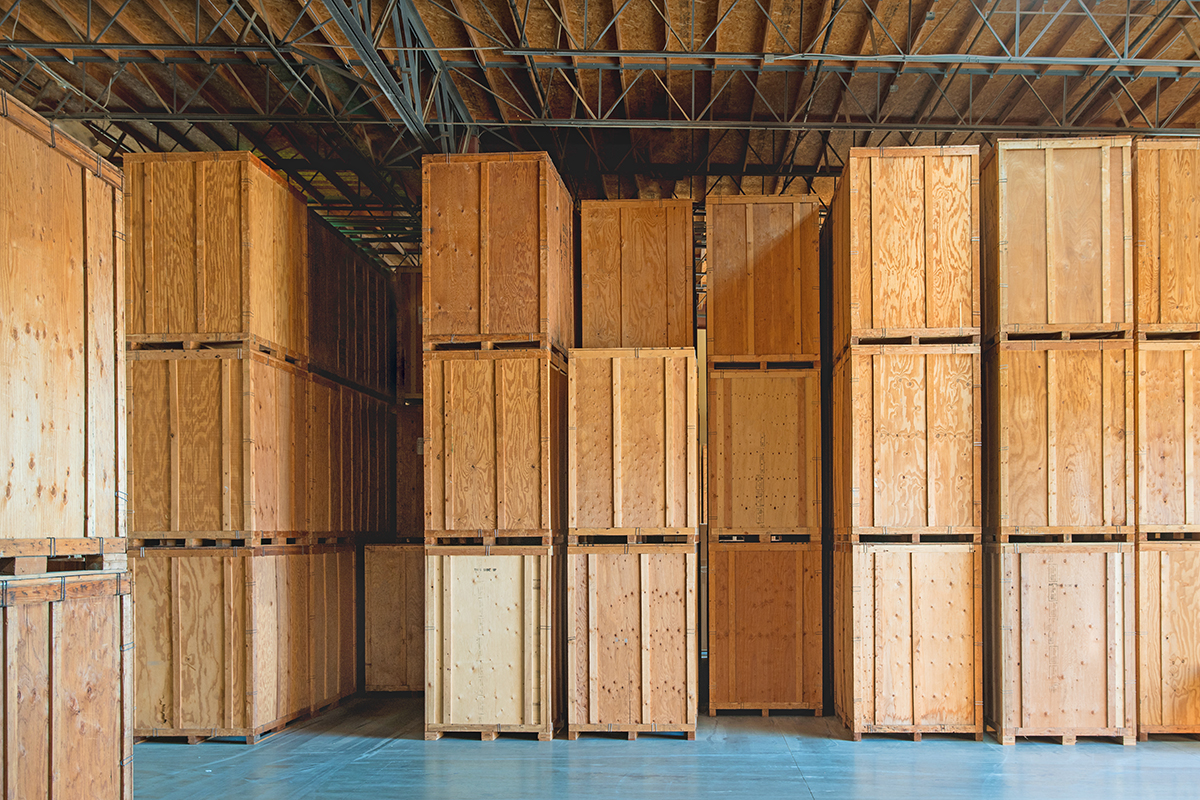As a purchasing manager, you may not realize that a lot of manufacturers prefer to use wooden crates over other options for industrial shipping crates. Obviously, proper protective packaging is essential to limit in-transit damage and transport your products safely.
You have a lot of options for shipping your products, such as pallets, wooden crates, multi-material packaging, and even steel industrial shipping crates. With so many options, it pays to know what will best fit your particular application. There are many factors that make wooden crates more practical, affordable, and sustainable than other types of transportation packaging.
Here are some things to think about as you work to determine the best packaging solution for your product and its destination.
How Far Are Your Products Going?
If your products have an international destination, it’s not unusual to think of using a large cargo container and putting your products on a cargo ship. Some companies even use cargo containers for shipments inside of the United States.
For many domestic shipments, cargo containers are just overkill and may not fully protect your products if you aren’t using additional packaging materials, such as pallets, wooden crates, corrugate, foam, etc.
Cargo containers are also pretty expensive to use as industrial shipping crates for domestic shipments, unless you can fill the entire container. If you’re shipping a single, large item, you can often save on costs by using a wooden crate and shipping it LTL (less than truckload), instead of using a steal container that takes up the entire truck. The wooden crate will protect your product while it gets shipped with other items on the same truck.
Wooden Crates Are Strong and Secure
During the packing, loading, unloading, and transport of your products, your transportation packaging can encounter a lot of mechanical stress that puts your products at jeopardy of being damaged. Wooden crates are built for that kind of abuse. This type of industrial shipping crate is built to handle not only the load, but the mechanical stress as well.
Even with very heavy loads, properly designed wooden crates protect products with little risk of damage.
In addition, wood crates provide the kind of security that isn’t found in other transportation packaging, such as pallets. Wooden industrial shipping crates usually have the product completely sealed up inside. The walls of wooden crates are often screwed together, making it more difficult for anyone to nefariously get to the products inside. Products are also much less likely to fall of the truck, as can occasionally happened with palletized products that aren’t secured properly.
Wooden Industrial Shipping Crates Are Versatile
Custom wooden crates come in all shapes and sizes, depending on the needs of the manufacturer. They can also be designed in hybridized ways that are completely tailored to the kind of product being shipped. Wooden crates can be open, sealed, hinged, and sides can be completely removeable.
Wooden industrial shipping crates can also be designed to combine wooden crates or pallets with other kinds of materials like corrugate, foam, strapping, and plastic. This is a strategy often used to decrease the overall weight and help keep freight and material costs down.
Wooden Crates Are Sustainable
As with most other wood packaging products, wooden crates are sustainable and environmentally friendly. For many manufacturers, creating a greener supply chain, being more environmentally friendly, and shrinking carbon footprints is highly prioritized initiative. Obviously, using industrial shipping crates made from wood isn’t going to get you there alone, but it’s a big step forward if your manufacturing company is focused on sustainability.
If you’re wondering if wooden crates really fall into the category of sustainable, then there are a couple of facts to consider.
- This type of transportation packaging can be reused multiple times, then repaired and used some more.
- When they are worn out, they can be cannibalized for parts for other packaging, or the wood can be used for other things – everyone has seen all the used wood projects out there.
- When wooden crates have lost their usefulness and can’t be cannibalized any further, they can be ground up for mulch, wood pellets, or animal bedding. Eventually, the wood breaks down and returns to the earth to help new things grow.
It’s hard to imagine how wooden crates could be any more environmentally friendly than that.
As an added bonus, they can be easily stacked, making them very easy to story and reuse.
Wooden Crates Are Economical
We’ve already alluded to the fact that wooden industrial shipping crates are economical, but it probably deserves a place in the discussion. As we said earlier, it makes sense to place large, single items in a crate and ship them LTL when you can, rather than using a steal container. Even if your single product took up a whole truck by itself, it would be more economical to use a wooden crate. Steal containers are more expensive and they weigh a lot more than a wooden crate.
If your products require a custom sized crate, then plastic probably won’t work for you. Either you buy whatever off-the-shelf size they have to offer and then pack it with materials like corrugate and foam to keep it safe, or you pay through the nose to have a custom size created for you. The cost of packing in the extra materials will add to the overall cost, so neither plastic crate option is very cost effective.
Cardboard or corrugate could be a viable option for many manufacturers. In this type of a scenario, a wooden base would be created, and corrugate sidewalls and lid would be affixed to it. This is something that we do for some of our clients, and it can be quite cost effective, depending on the mode of transportation and the distance being shipped.
When you’re looking at the overall costs of your packaging, you should also consider the cost of in-transit damage. Some types of transportation packaging are more prone to in-transit damage than others. Wooden crates provide a complete barrier between your product and the environment, which can significantly lower the damage that your products sustain during transport.
When you factor in the cost of damaged products, or lack of damage in the case of wooden crates, then this type of packaging is often much more economical.
Lastly, consider that wooden crates can be reused multiple times. This increases the lifetime value of each crate and lowers the overall cost. You can even design wooden crates specifically so that they can be reused.
Overall, wooden crates prove to be much more economical than many other forms of transportation packaging.
Wrapping It Up
Now it’s probably pretty clear why so many manufacturers prefer to use wooden crates over other options for their industrial shipping crates. You have a lot of options for properly shipping your products, and it’s smart to make sure you’ve explored them all to find the transportation packaging that works best for your application.
Wooden crates are often the best packaging solution, but you’ll have to determine if it’s right for you.



![[PRESS RELEASE] Conner Industries Announces Major Guardian Packaging Expansion](https://conner.b-cdn.net/wp-content/uploads/2024/10/Guardian-Packaging-Expansion-500x383.jpg)
![[PRESS RELEASE] Conner Industries Announces Website Dedicated to Integrated Packaging Division](https://conner.b-cdn.net/wp-content/uploads/2024/05/Conner-Packaging-Blog-500x383.jpg)


